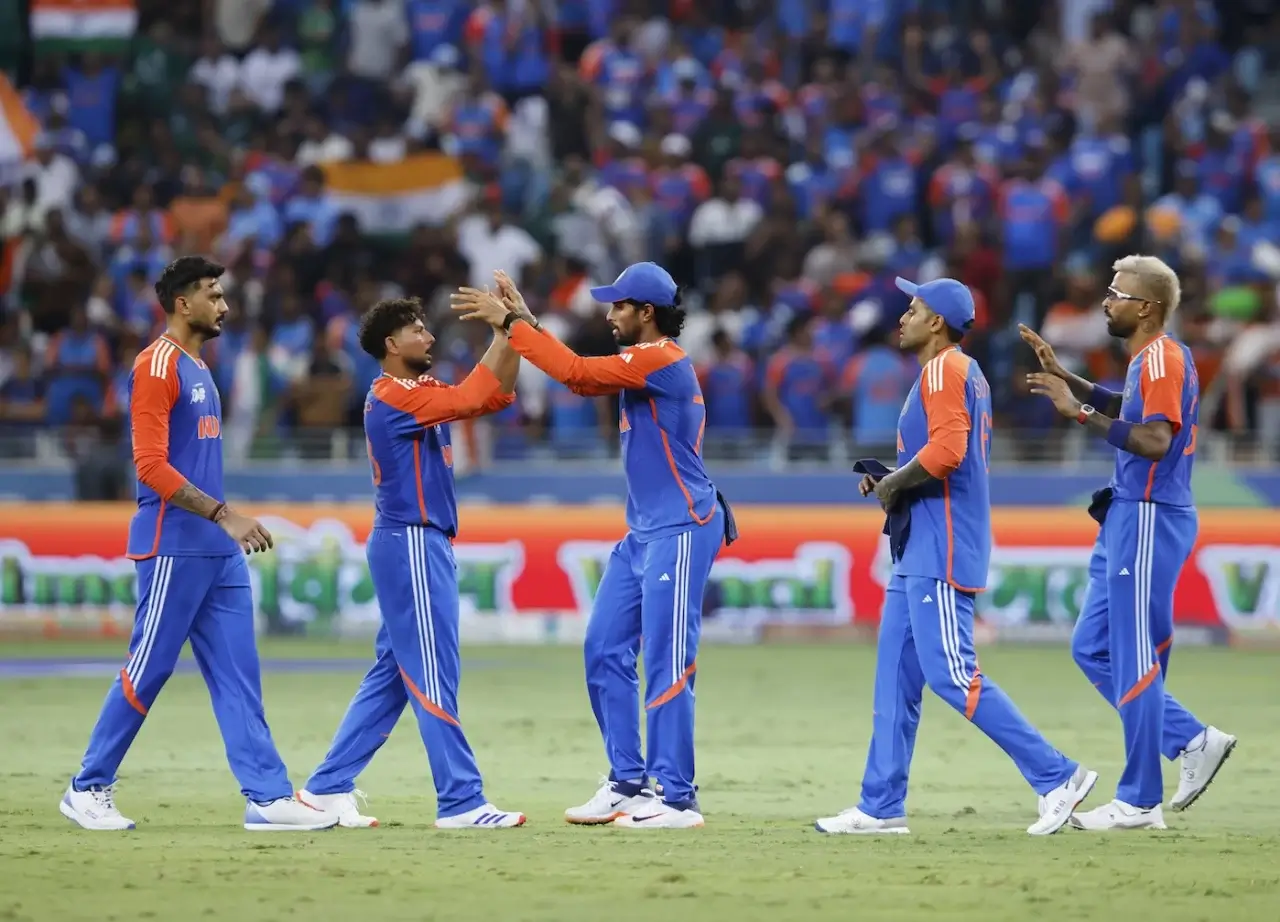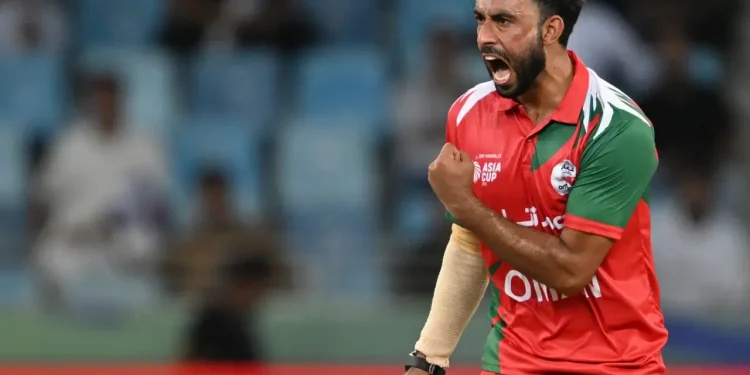India face Oman in a rare contest that carries very different motives. For India, the match is about tuning the middle order and testing bench strength. Some batters have yet to face a single delivery despite being picked in the first two games. This clash gives them the perfect platform to settle into rhythm before the Super Four stage.
Oman enter the game with contrasting aims. They already know the result will not change their standing in this Asia Cup. Yet, this match is significant because it is their last outing before hosting the T20 World Cup Asia Regional Qualifier. Facing a powerhouse like India gives them valuable lessons they cannot gain elsewhere.
The match also marks the first-ever meeting between India and Oman in any format. While India prepare with focus on bigger battles ahead, Oman look at this clash as a stepping stone. Both teams, therefore, enter Abu Dhabi with very different mindsets but shared expectations of growth, like England team.
India Looks a Dominated Side That Will Win Undisputed?

India’s form in the tournament has been sharp and consistent. Wins against UAE and Pakistan have already confirmed their place in the Super Four. This allows the management to rotate the squad without worrying about qualification pressure. Names like Arshdeep Singh and Harshit Rana could come into the XI if Jasprit Bumrah is rested.
At the top, Abhishek Sharma continues to impress with a strike rate nearing 195. His explosive starts give the middle order breathing space. Players like Suryakumar Yadav and Tilak Varma are yet to face crunch situations but remain crucial. With a balanced squad that combines experienced names and rising talents, India appear far stronger than Oman on paper.
The only question is whether India will go full throttle or treat this game as practice. Their dominance is expected, but the intent shown by batters like Samson and Dube could set the tone. For India, winning is not the challenge — execution and role clarity matter more.
Can India Maintain Intensity in a Dead Rubber?
Dead rubbers often see reduced energy from bigger teams. However, India’s bench strength and hunger to perform keep standards high. Youngsters waiting for opportunities know they must use this chance to impress selectors. The challenge is to stay ruthless and avoid complacency.
How Teams Like Bangladesh and Pakistan Are Struggling in the Series?
While India dominate, other regional giants like Pakistan are not finding the same comfort. Pakistan have shown cracks in their batting order, suffering collapses against both associate and Full Member teams. Their middle order has failed to provide stability, raising doubts ahead of tougher fixtures.
Bangladesh, too, continue to face familiar issues. Their batting lacks power, particularly in T20s. Defeats against stronger bowling attacks have exposed their reliance on a few senior players. Young batters have not stepped up, leaving the team vulnerable in pressure moments.
These struggles highlight why India’s depth is so significant. Unlike their neighbors, India can rest key stars and still field a winning XI. This gap underlines the challenge for teams like Bangladesh and Pakistan. Unless they solve batting weaknesses and middle-order fragility, they may continue to trail behind.
Regional Rivals Must Learn Quickly
With the T20 World Cup less than a year away, both Pakistan and Bangladesh need fast solutions. India’s smooth rotations show the benefits of depth and planning. Their rivals must look beyond short-term fixes and build competitive squads with match winners.
Will Players Like Arshdeep and Jitesh Sharma Get a Chance?
One major talking point is whether India rotate their squad for this game. Arshdeep Singh, already India’s top wicket-taker in T20Is, has yet to feature. Resting Bumrah could give him a natural slot. Harshit Rana is another option who might debut in this low-pressure contest.
Jitesh Sharma remains another interesting case. Despite being in the squad, Sanju Samson has been preferred as wicketkeeper. This match could open a door for Jitesh, though Samson may still retain his spot. India’s middle order has not faced many deliveries in the tournament, making batting time for Samson more important.
These decisions will reveal how India balance preparation with experimentation. The management must weigh the benefit of giving new players a chance against the need for established names to get time in the middle. Either way, this game gives them flexibility.
Rotation Could Define India’s Approach
If India rotate heavily, new faces can prove themselves on a global stage. If they stick with regulars, batters like Samson and Rinku Singh must grab time in the middle. The choice lies in how India want to shape momentum before the Super Four.
What Is the Significance of This Dead Rubber Match for Oman Team?

For Oman, this match is not about points or qualification. It is about exposure, learning, and preparation for the upcoming T20 World Cup Regional Qualifier. Playing against India helps them test players under pressure, something they rarely experience. Their bowlers, like Shakeel Ahmed and Jiten Ramanandi, will measure their skills against India’s aggressive batting order.
The batting department has been Oman’s biggest concern. Collapses against Pakistan and UAE exposed inexperience and lack of depth. Facing bowlers like Hardik Pandya, Kuldeep Yadav, or Arshdeep Singh will be another stiff test. Even if results go against them, the lessons gained will help Oman in crucial qualifiers at home.
The significance of this game extends beyond just one day. It gives Oman benchmarks of where they stand against top teams. For a nation aspiring to reach the T20 World Cup, such opportunities are invaluable.
Oman’s Focus is on the Bigger Prize
Their eyes are already on the Regional Qualifier, where three teams can progress. Playing India helps them adjust strategies, understand weaknesses, and boost confidence before facing Asian rivals at home. The dead rubber may feel small to some, but for Oman it is a rehearsal for history.
Conclusion: A Match of Contrasts With Lessons for Both
India vs Oman may not change the table, but it carries weight in different ways. For India, it is about tuning the squad, giving players match time, and testing new combinations. Their dominance is unlikely to be challenged, but execution remains vital. Youngsters like Arshdeep, Harshit, and Jitesh wait for their opportunities. This game could be the ideal stage.
For Oman, the game is far more valuable than it seems. Playing against one of the best teams in the world gives them perspective. Batters face top-class bowlers, while bowlers test themselves against fearless hitters. Every over bowled, every run scored adds to their preparation for the qualifiers.
This match may be called a dead rubber, but it is alive with lessons. India continue their march towards the Super Four with confidence, while Oman take notes for a bigger dream — reaching the T20 World Cup. In many ways, this contrast makes the fixture just as important as any final.

